In high latitude areas such as the northern United States, Canada, and Scandinavia their winter temperatures are very cold.
This means that you can experience engine starting difficulties or a difficult time with ignition when operating an ATV in these regions during December through March months because it's too low for regular gas-powered vehicles to work properly without assistance from heaters and other devices designed specifically for this purpose.
ATV block heaters are the perfect solution for people who live in snowy or chilly areas. There's a variety of different kinds available, and which one you get will depend on your specific needs- but they're worth investing in!
If you're looking to buy an ATV block heater, then this article is the perfect place to start. In it we'll show how choosing and installing your new ATV Block Heater can make all of that cold weather worthwhile!
In order for any type like engine block heater, oil pan heaters, or inline coolant heater - there are a few things which should always come into consideration when making decisions:
This article would cover three distinct ATV block heaters, so STAY TUNED!
First things first, let's introduce ourselves.
We are an automotive heater manufacturing company in China with 27 years of experience producing high-quality heaters for cars and trucks worldwide! Our team has experts on hand to help you find the perfect ATV block heater that will suit your needs perfectly.
We've been cranking out quality products since 1996 so trust our expertise when it comes down t finding one just right: whether its heat for your camper during winter months or heating for your ATV engine...we got ya covered.
A block heater is a type of heating equipment. It can also be called an engine heater, and it heats the engine block or antifreeze inside by means electric element so that temperature rises to melt lubricant (synthetic oil)due to its warmth - which makes starting easier for you!
There are three main types of block heaters used on ATVs:
Each one has its own pros and cons that you’ll want to consider before making a purchase decision.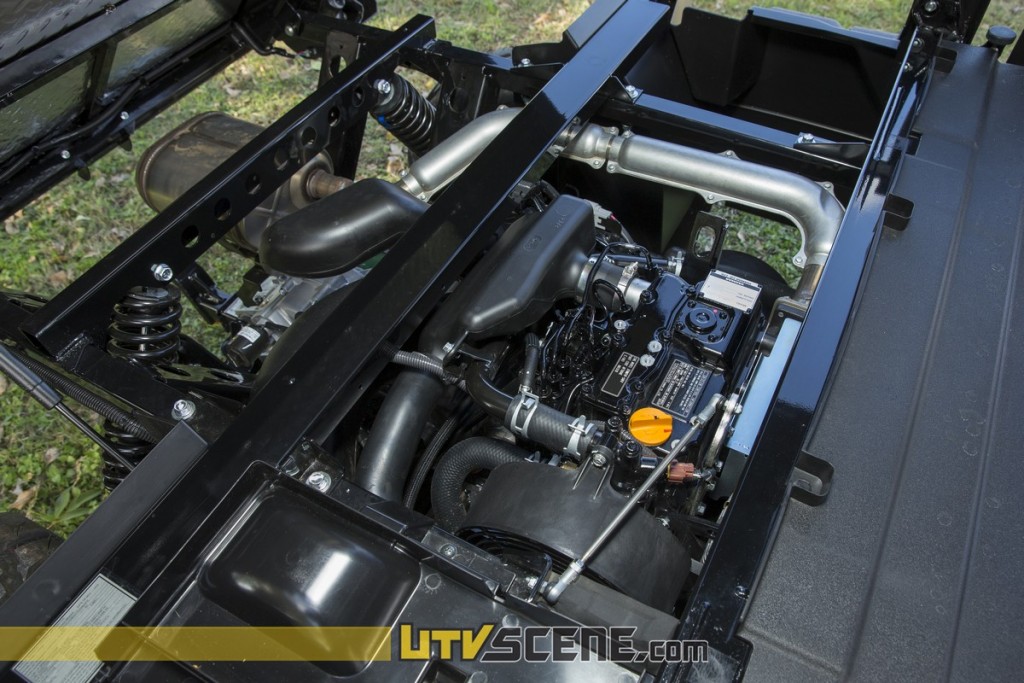 In this article, we cover each type in detail so you can decide which is best for your needs.
In this article, we cover each type in detail so you can decide which is best for your needs.
This engine block heater is the perfect solution for all ATVs and UTV out there! It is ideal for ATVs and UTVs that use antifreeze as their cooling medium.
This type of block heater is mounted on the engine’s water jackets. It circulates heated coolant throughout the entire engine, not just through one part or area. This increases heat everywhere in your engine creating a more even heating effect that allows for faster starts and overall better performance.
Installing an ATV or UTV block heater is not as difficult as you think it is, you just need to follow the guidelines. What you need to do is to disconnect the radiator hose, connect the outlet and inlet of the heater to the radiator hose, then bolt it in its place. This is all that must be done for installation in most cases. Make sure to remove any air bubbles you find before connecting.
This is all that must be done for installation in most cases. Make sure to remove any air bubbles you find before connecting.
Safety is our priority. The heater has a temp controller inside, which stops automatically at 65 degrees Celsius (149 F)! The heater inlet and outlet are 5/8 (0.63) inches, so you will need the right coolant hose for this to work.
Don’t worry about the heater not working as sub-zero temps are included that would help the coolant not to freeze.
This type of heater is ideal for those riders who need to warm their engines before starting. Also, it works as an auxiliary heating system in Canada during the winter season.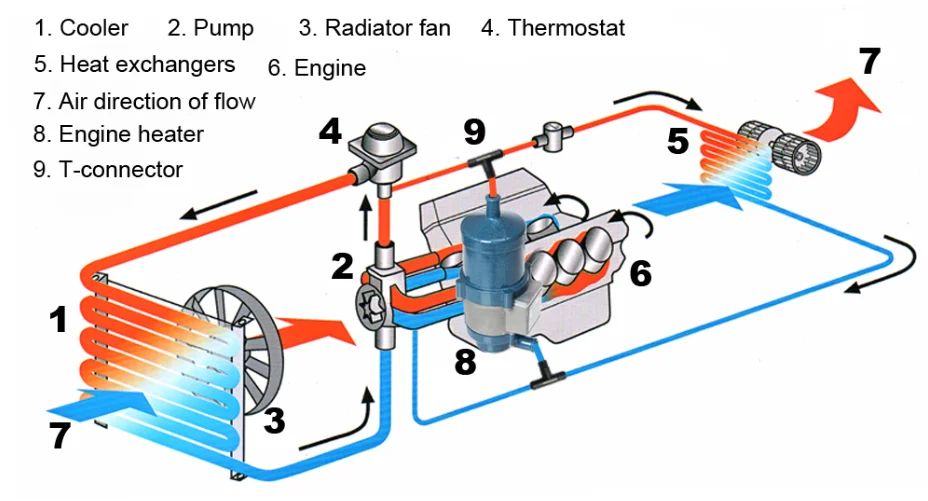 This type of product would keep you on the road all season long!
This type of product would keep you on the road all season long!
You can find quality block heaters like the one described above on Amazon or RVheater.com and princess auto, for example, the Vvkb engine block heater.
An oil pan heater is a great option for those who don’t want to install an engine block heater or if their ATV doesn’t have antifreeze as its cooling medium. This type of heater attaches to the bottom of your ATV’s oil pan and heats the oil.
This is a silicone heating pad that's installed in the engine oil pan. When you plug it in, your oil pan heaters will start to heat up and its temperature transferred from here all over! However, these things have lower power than engine block heaters and magnetic heater ones so they'll take longer too - but are perfect for air-cooled engines.
This is typically used on all-terrain vehicles or ATVs. Generally speaking, they are most useful in colder climates and during winter months when the temperature is at its lowest. Block heaters work by using a standard 120-volt electrical outlet to power up the oil pan heater which then heats the oils inside of the engine directly. This allows for easier starts and better performance all around.
Block heaters work by using a standard 120-volt electrical outlet to power up the oil pan heater which then heats the oils inside of the engine directly. This allows for easier starts and better performance all around.
One of the best things about oil pan heaters is that they are typically very affordable, easy to install and work with most ATVs. You can find a quality oil pan heater on Amazon or at your local hardware store, like this one from Mr Heater .
The only downside to using an oil pan heater is that the drain hole of your oil pan must be open to allow for proper drainage. If you have a lower-end ATV, then there’s also a chance that this heater may not work properly due to engine design or if it was cheaply made.
The second great and best choice for those who want to keep their ATV running in the freezing weather is a magnetic engine heater. This type of heater attaches directly to the outside of your engine and uses magnets to heat the metal surfaces.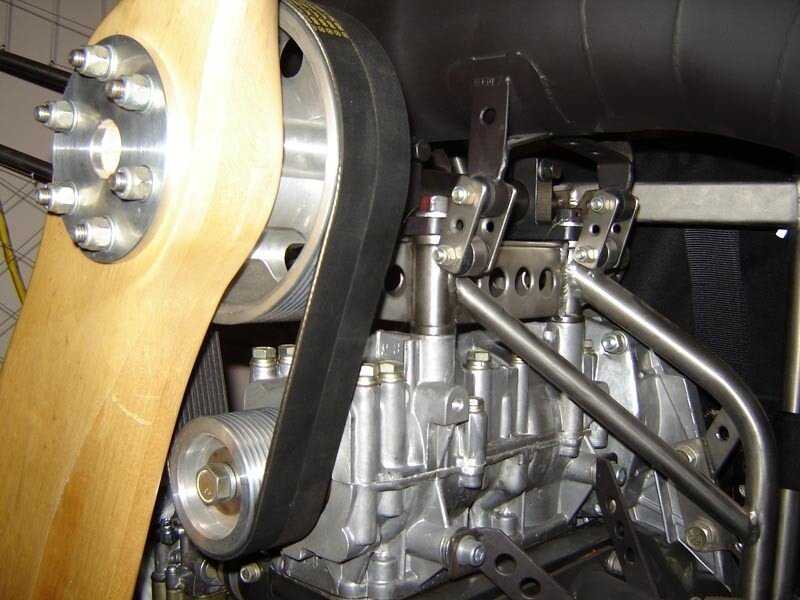
This method is said to be more effective than other types of heaters because it can directly heat the engine instead of warming the oil or coolant. Magnetic heaters are also relatively easy to install, typically using magnets that stick right to the outside of your engine.
Magnetic heater works on the principle that alternating current is passed through a coil to create eddy currents. The hot iron material close to this heater becomes superheated and spreads throughout your car's engine to boot up faster at times!
This electromagnetic engine heater is perfect for those with specific heating specifications. It can be used only in one scenario, but that doesn't stop it from being an excellent choice if you can find a place to put it!
It is important to know that a block heater should only be used in areas where the temperatures regularly fall below freezing.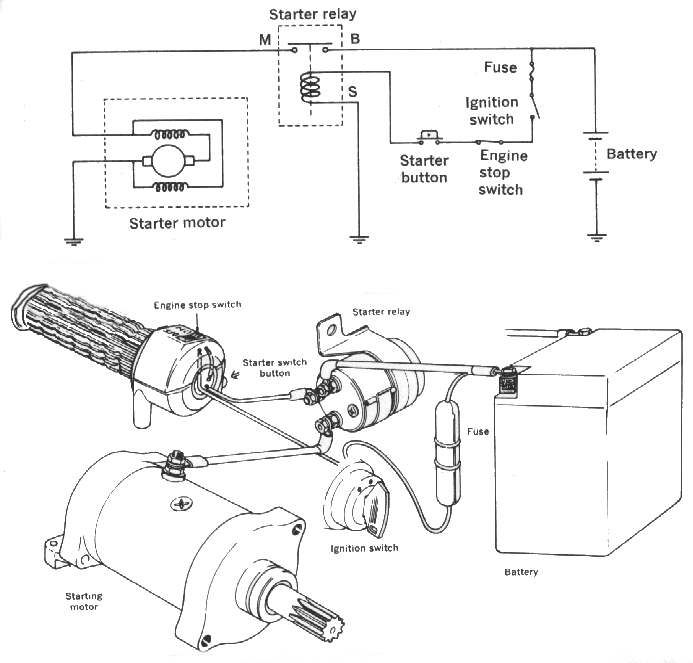 If you live in an area where the temps never dips below 32 degrees Fahrenheit, then there is no need for a block heater and it will only be a waste of electricity.
If you live in an area where the temps never dips below 32 degrees Fahrenheit, then there is no need for a block heater and it will only be a waste of electricity.
In cold weather, the engine oil of an ATV can solidify. It becomes very difficult to start the ATV and if it is not warmed quickly enough there will be more wear on your precious machine! Using a Block Heater with this problem in mind can give you back many hours out of every day because they make sure that everything starts smoothly no matter how low temperatures get.
The low temperature will increase wear even further as metal corrodes faster at subzero temperatures than it does warm ones; not only do you risk damaging crucial components but also polluting both yourself through exhaust fumes/particulates produced while running vehicles equipped with modern smog control technologies such as electronic air filters.
That is why it’s always a good idea to have a menu block heater on your ATV, even if you don’t live in an area that experiences below-freezing temperatures.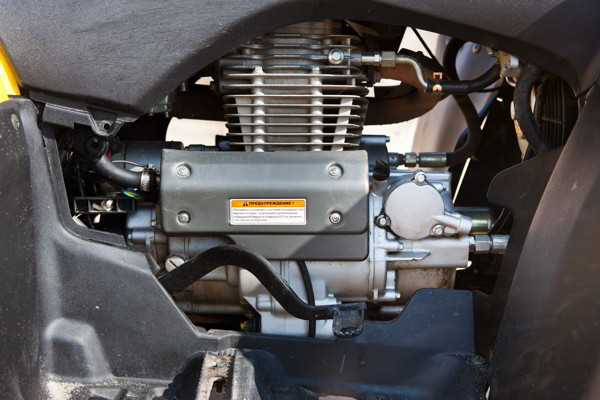 The peace of mind and added safety are well worth the purchase price!
The peace of mind and added safety are well worth the purchase price!
There are many places to buy block heaters. Some good places to start looking are at your local auto parts shop, ATV dealer.
Alternatively, you can search on Google, and you can search on shopping platforms such as online retailers like Amazon or eBay(You may see some heaters on eBay for a garage sale. we don't recommend you to choose this kind of heater. It's quality is not guaranteed.)
Make sure you get a quality product that will last and is compatible with your ATV make and model.
Prices can vary depending on the brand, so it is important to do your research before making a purchase.
You can browse various forum community to find and ATV block heater related content, read some more posts, it will be very helpful for you to choose the right heater.
Here is a detailed comparison and description of the two Vvkb engine block heaters.
Vvkb engine preheater Titan-P1 is probably the best ATV heater.
It joined us in 2010. In the past 11 years, it is popular and well-received by users.
Its relatively small profile makes it ideal for ATVs and UTVs with compact space configurations.
It is very easy to install. We also offer AN threads connectors for our customers
After your ATV block heater has been working for a few hours, you turn on the AUX heater and will notice a short change in the time it takes for the hot air to come out.
Data of Vvkb Engine Preheater Titan-P1| Interface diameter | 5/8 inch(16mm) |
| Weight | 0.8KGS(1.8ib) |
| Dimension | 110mm x 84mm(4.3in X 3.3in) |
| Rated voltage | 110V/230V |
| Rated power | 1000W |
| Rated frequency | 50Hz/60Hz |
The Vvkb hose heater Titan-B1 is our newest heater.
It was originally posted in 2013. It is the result of years of experience by our team of engineers. We started sell them in 2015.
It can deeply solve the problem of ATV engine cold starting. It makes a noticeable difference to ATVs. You can see that there is a wider variation between the ATV with Vvkb hose heater and the ATV without it.
Using Titan-B1 for a long time is also able to reduce the time of hot air generation.
We also designed a thermostat with a switch function for the Titan-B1.
When the heater reaches the set temperature, the thermostat with a switch function will cut off the power for safety. You need to do it yourself to get the thermostat of the heater back to its original position.
This function needs to be customized.
| Diameter of input and output connectors | 5/8 inch(16mm) |
| Weight | 0. 9KGS(2IB) 9KGS(2IB) |
| Cable length(m)/(ft) | 1/3.3 |
| Dimension | 168mm x 81mm( 6.6in X 3.2in |
| Rated voltage | 110V/230V |
| Rated power | 1000W |
| Rated frequency | 50Hz/60Hz |
| Plug styles | American, European, and Australian Standard |
How much does it cost and where can I find the best prices for one online
ATV block heaters can cost anywhere from $100 to over $300 depending on the brand you choose and where you purchase it. Prices for these items are generally lowest when purchased online with free standard shipping.
At RVheater.com, you can find different models of engine heaters. They are available in different wattage options, as well as non-style plugs and different form factors.
They also offer a wide variety of accessories, including extension cords and rubber boots that can help keep your ATV's engine warm in colder climates.
Below is a list of some common questions we have compiled, the answers to which, may be helpful to you.
Questions about logistics and delivery time.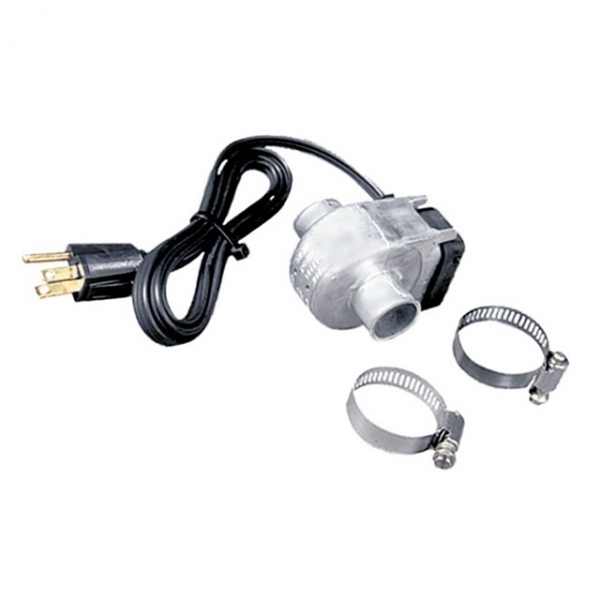

If you are still not sure if engine heaters are right for your needs, consider the cost of repair or replacement of engine components due to cold weather damage. This could be much more costly than the price of a block heater! And, you’ll be spending more time repairing your ATV than riding it.
If you have a block heater on your ATV, there’s no need to worry about any of that. You can just plug it in before bed and wake up to a warm machine without having to spend hours trying to start it in the cold. If you don’t have an ATV block heater, then be sure to figure out how to get your ATV to start it in the cold winter months.
So, hopefully this guide has helped inform you on all there is to know about ATV block
If you have any other questions, please feel free to contact us: info at Vvkb.com
Previous
Next
TUV, RoHS, CE and FCC compliant
Constant and rapid heating
Easy to Install
Fully after sales support on any Vvkb block heater
10 block heater patents
Request a Quick Quote Now
buy it Now
Cold starting all-terrain vehicle (ATV) engines increase engine wear, CO2 emission, and fuel consumption. Thus, using utility, sport or kids ATV during winter can be expensive.
Thus, using utility, sport or kids ATV during winter can be expensive.
With the Vvkb ATV Block Heater, you can use the ATV anytime all year round. Vvkb ATV Block Heaters have a compact, easy to install, fast heating and easy to maintain design.
These ATV block heaters quickly warm up the engine during winter, thereby extending the lifespan of starter components and entire engine. It consumes less fuel and ensures less CO2 emissions to the environment.
Every Vvkb block engine warmer for ATV features a progressive improvement and innovations with an inbuilt pump, thermostat, and control system. They have an aluminum structure designed for rough terrains.
If your ATV requires one block heater, please visit our retail website: www.RVheater.com to purchase.
If you only need one ATV heater, please visit Vvkb block heater to buy!
Rated voltage: 120V / 230V Rated power: 600W/1000W/1500W Current intensity: 5 amps / 8.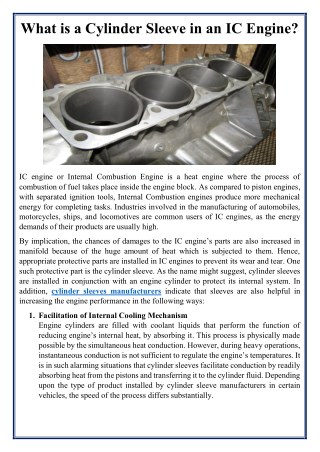 5 amps / 12.5 amps
5 amps / 12.5 amps
With built-in pump
With temperature controller
As a leading block heaters manufacturer, Vvkb supplies different engine heaters not even ATV block heaters. Other like Truck block heater, car block heater, snowmobile block heater, tractor block heater and so on.
Check all Vvkb block heaters here.
Request a Quick Quote Now
VVKB Block Heaters
Send Enquiry Now
VVKB Block Heaters
Send Enquiry Now
If you’re looking for an efficient, safe and versatile way to heat your ATV, block heaters are a fantastic choice.
But with hundreds of brands, designs and models available, figuring out the right heater for your needs can be tricky.
Thus, by taking a little of your time to read our today’s guide, we can help you narrow the search a bit.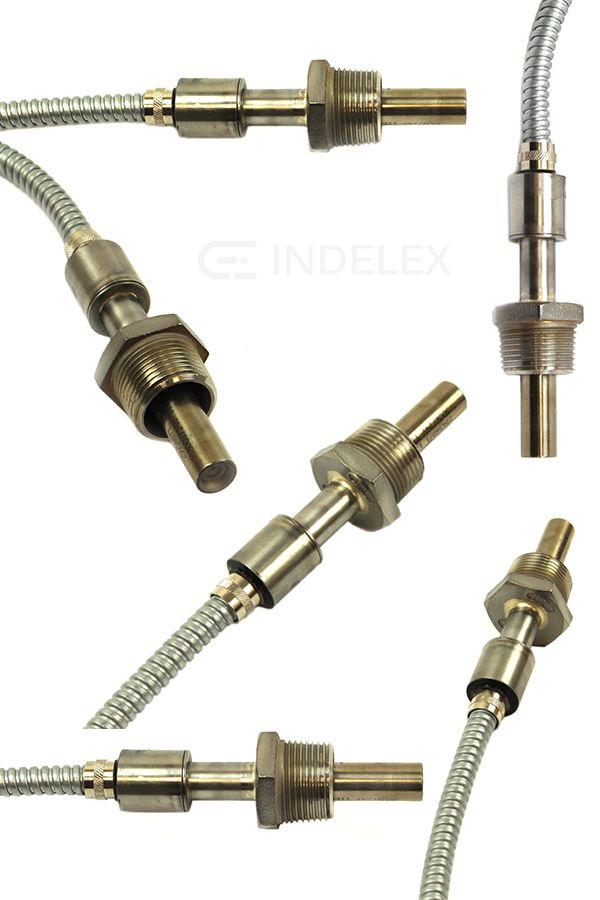
So read on.
By definition, a block heater is a device used for heating the engine block of a vehicle.
And an ATV is an all-terrain vehicle also known as a quad or quadricycle.
An ATV block heater thus is a device used to heat or warm the engine block of all-terrain vehicles.
This type of heater is commonly used in areas that experience bitterly cold winters.
If you live in such areas, you know how troublesome starting a cold engine can prove to be.
ATV Block heater
And, constantly cold starting your engine can lead to the wear and tear of your engine block.
With a block heater, however, you can prevent cold starts and even save your engine block from unwanted wear and tear.
The good thing with this devices is that they are easy to find.
You can purchase yours directly from a manufacturer, or from any auto parts retailer.
Note that having a block heater is not an absolute must.
But for people living in areas that get adverse winter weathers, then an ATV block heater is an absolute necessity.
With this in mind, allow me to further share with you why an ATV block can be a good solution for cold starts.
Why you need ATV Block HeaterThere are many reasons why people with ATVs should use an ATV block heater.
As everyone with a vehicle knows, it can be costly to keep a properly functioning engine when you live in a cold area.
This is you should know that directly cold starting your engine can cause severe damages to your engine.
And, repairing these damages can cost hundreds of dollars per month or more in adversely cooler months.
A good solution for this, therefore, is to install a block heater in your ATV.
This will help ensure the smooth running of your vehicle regardless of the weather is to install a block heater.
ATVThis is because:
1) It will help to reduce the chances of a cold startWhen plugged in, a block heater will keep your engine warm throughout making it easy for you to start it in the morning.
It thus reduces and eliminates the need for cold starting the quad in the morning.
2) It is easy on the engineAn ATV block heater will make it easier for your vehicle to start and run.
As we’ve already established, quad engines tend to have a hard time starting up in cold weather.
During cold weather, the engine will need to work harder and may thus not be able to start right away.
At least not like it does during summer or more favorable weather.
In cold weather, the engine needs time to warm up before it can start and get running.
A block heater, in this case, helps to keep the engine warm throughout the night making it easier to start in the morning.
3) Extend the life of your car engineMost people end up replacing their engines or repairing them due to damages caused by direct cold starts.
With block heaters, you don’t need to worry about this.
These heaters are built to help maintain your vehicle engine at optimal operational level.
With less cold starts, you can rest easy knowing that your engine has a chance to survive winter and more to come.
4) Block heaters are easy to installInstalling a block heater is much quicker and easier than most people think.
The heaters come with installation manuals and accessories like mounting brackets and plugs.
You can, therefore, install a block heater in just a few minutes.
It doesn’t matter the size or position of your engine, the manufacturer’s manual makes all this work easier.
Don’t worry though as I’ll show you a simple step by step process on how to install a block later on in this guide.
In the meantime, let’s explore your options of block heaters in the market.
Types of ATV Block Heaters in the MarketThere are different types of block heaters in the market.
These include:
a) Dipstick HeatersA dipstick heater or oil pan heater as its otherwise known is placed where the dipstick would normally be.
This heater helps to keep the oil warm not the entire engine block as you would expect.
When the engine is warm, it thins and doesn’t sludge up in cold weather thus won’t have a hard time starting up the engine.
Dip stick heaterNote that dipstick heaters are often very effective and inexpensive.
What’s more is that they are very easy to install.
Anyone can install it; you don’t need special skills or experience to do it.
b) Engine Heater BlanketsFor those that live in areas that experience occasional cold weather, engine heater blankets are a good alternative.
These work in a way that’s quite similar to a standard electric blanket.
Engine heater blanket – Photo courtesy: NK GroupThe only difference is that heater blankets are made to be used in extremely harsh conditions.
For these, you’ll only need to plug them into a power source and place them over the engine block of your vehicle.
They will keep the engine, oil and fluid warm throughout the night.
These type of heaters are built to only heat up the coolant in the reservoir.
In Line Coolant HeaterThe heaters come with an inbuilt pump that helps to circulate heated coolant within the engine to help keep it warm
d) Bolt on HeatersThese are a type of heating device that’s designed to heat the whole engine block externally.
Bolt on HeaterThey don’t heat the coolant in the reservoir directly.
e) Radiator HeatersRadiator hose heaters aren’t as common as the other types we’ve mentioned.
They are however quite effective in their functionality.
For this type of heater, you’ll need to splice it into the top radiator hose of your vehicle.
It will heat the coolant from here.
The advantage of using a radiator hose heater is that it is effortless to install it.
So those are the five main types of ATV block heaters.
Make sure that you understand each of them to be able to choose the right heater type for your needs.
Moving on, let’s explore the parts that make up an ATV block heater.
Parts of ATV Block HeaterWhen talking about engine heater installation, it is important you be conversant with the parts of the heater itself.
This is because you will need this knowledge to know what each part is, where it goes and its function.
And not just for installation, knowing your heater parts can be handy for performing repairs and replacements.
So read and take this section with great importance.
As you do that, keep in mind that there are many different types of ATV block heater parts.
The ones in your model will depend on what type of block heater you buy.
Here are some of the more common parts:
a) Control systemThe control system comprises of the control panel, on/off switch among other knobs that you use to set preferred parameters.
The main function of the control system note is to analyse, diagnose and prompt functions within the heater.
Fuel tanks are seen on fuel-powered block heaters.
If you are using one of this, you’ll notice a container-like part where you store the fuel that’s used to run the device.
c) Combustion chamberThe combustion chamber is a very significant part of a block heater.
It is here that heat is produced and released to keep the engine, coolant or oil warm in cold weather.
d) Exhaust systemThe exhaust system as the name suggests is an outlet that releases exhaust waste from the combustion chamber.
Remember that when air/water mixes with fuel and burns, it forms heat and exhaust air/waste.
It is through the exhaust system that exhaust waste and gases leave the combustion chamber.
e) CasingThe casing is the outer cover of a block heater.
This part could be made of aluminum, nylon or plastic depending on the level of rigidity, durability and flexibility needed.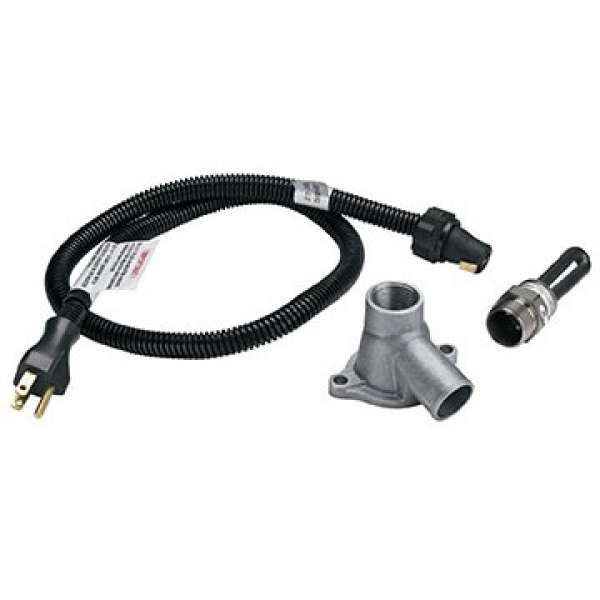
Note that different brands and models feature different casing materials.
So when selecting a block heater, the material is something you’ll need to consider.
f) Heat exchangerThe heat exchanger is located close to the combustion chamber.
Its primary function is to separate cool air and hot air from mixing.
It plays the role of exchanging or transferring heat from the heater.
g) Duct VentA duct vent is a passage within the heater that helps to pass air in and out of the device.
It helps in ensuring proper ventilation to parts within the heater.
h) Fuel pumpThe work of the fuel pump is to pump fuel from the tank to the combustion chamber.
As you’ll notice, the fuel pump is quite a small part.
However, it plays a significant role in ensuring that sufficient amounts of fuel are supplied from the tank to the combustion chamber.
i) Cold air inletThe cold air inlet is a passage for cold air from the engine to the heater’s combustion chamber.
It is this cold air that mixes with fuel and burns to create the mixture of heat and exhaust waste.
j) Ignition plugFor burning to occur in the combustion chamber, the ignition plug plays a very significant role.
It is the ignition plug that delivers the needed energy to the combustion chamber.
This energy helps to ignite the burning process within the air/fuel mixture.
Note that the ignition plug only sparks the burning process but doesn’t sustain it.
k) Hot air outletThe working of an ATV block heater, which I explain to you in a short while, relies on the proper circulation of air in and out of the heater.
And, as I’ve already told you, the cold air inlet is responsible for letting in the cold air.
The hot air outlet on the hand is responsible for letting out already heated air onto the engine surroundings.
Engine heaterIt is this hot air that helps to keep your engine warm throughout the cold.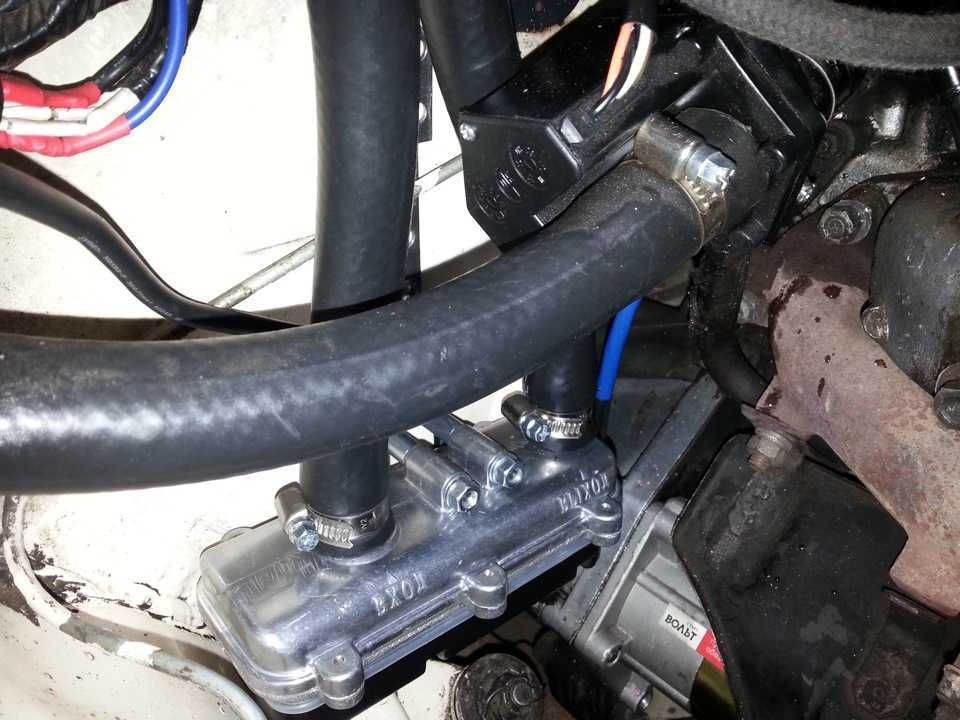
I’ll help you understand this shortly.
How ATV Block Heater Maintains a Comfortable TemperatureATV block heaters take their power from different sources.
Some use electricity where you’ll need to plug the heater in some electrical wall socket.
There are propane heaters that use gas to function.
And, there are fuel powered heaters that can utilize diesel or gasoline from the vehicle’s reservoir or an independent fuel source.
However, regardless of how the heater is powered, the working mechanism is generally similar across all of them.
So let me explain this briefly.
You see when you install the block heater onto your ATV and put it on, it will begin to function immediately.
First of all, switching it on will prompt several commands on the control system.
Then, the heater will begin to draw its power whether gas, fuel or electric.
This power is used to warm up the heater core in readiness for the actual heating process.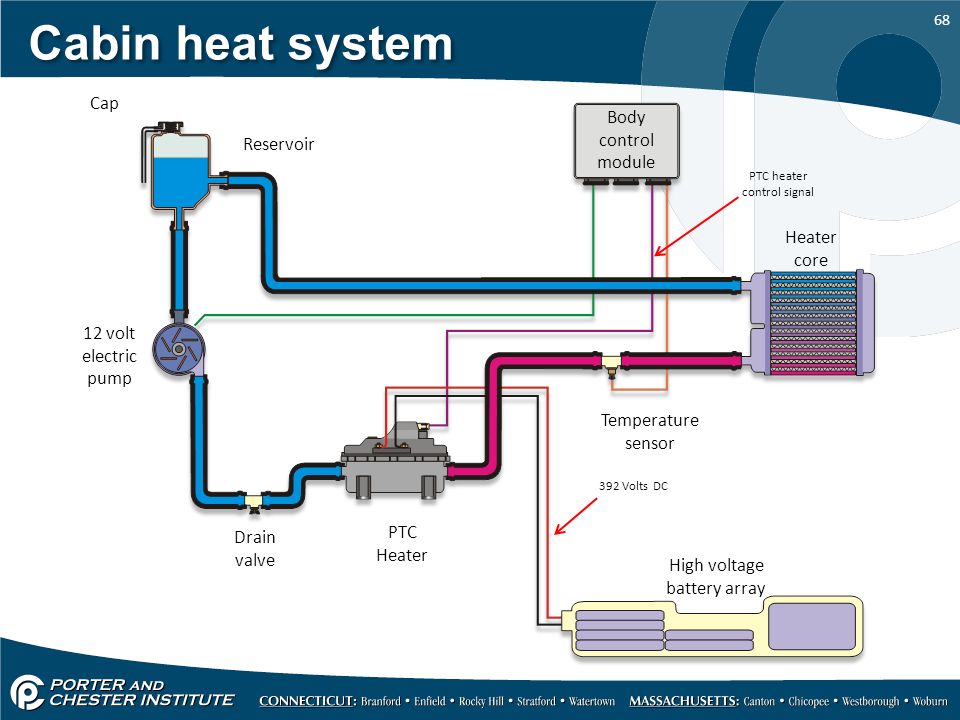
Cold air will be sucked in via the cold air inlet into the combustion.
At the same time, the heater will draw up fuel from the fuel pump into the combustion chamber.
Heating ATV Engine
The cold air and fuel will mix up.
At this point, the ignition plug will kick in and spark a burning process.
The mixture will burn to result in a mixture of heat and exhaust gases.
Once the desired temperature is reached, it will be transferred to the outer parts of the heater which then transfers into the engine and the surrounding parts.
The exhaust gases/waste will be released out of the combustion chamber via the exhaust system.
One of the many features of block heaters is they tend to release heat for long after the device is switched off.
This means that even after the device is switched off, it will still have a warming effect upon the engine and its surroundings.
Now understand that if you’re using an in heat coolant heater, it’s the coolant that will mix with fuel in the combustion chamber.
Once heated, the coolant will be supplied within the engine with the help of an inbuilt pump.
For the other types of heaters, I’ve given brief explanations in the ‘types of ATV block heaters’ section.
That’s it.
Technical Specification of ATV Block Heater
No doubt that for quad owners, ATV block heaters are a convenient solution for the cold.
There are a plethora of them in the market and finding a suitable for your needs can prove to be a challenge.
Read ATV engine heater user manualSo to help guide you out, here are a few elements that you should consider when buying a unit for your vehicle.
I. Applications
You have to choose the right heater for your application.
As it stands, there are block heaters for a variety of ATV applications.
There are heaters for three-wheelers and four-wheelers.
All these vehicles have different heating needs in cold weather so make sure that the heating device you’re getting for it is right.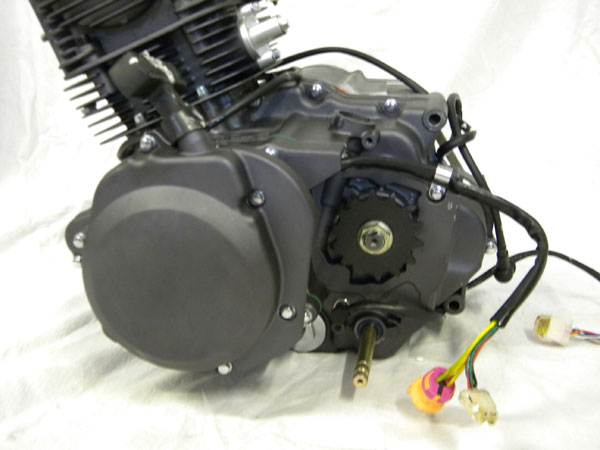
Also considering the application, consider if you need a dipstick heater, a heater blanket, bolt heater or radiator heater.
II. Quality and safety compliance
Generally speaking, block heaters are built with safety in mind.
They are less risky than other types of heaters.
With that being said, you will still need to conduct due diligence in ensuring that you’re buying a safe product.
In this regard, you need to make sure that your product of interest is RoHS, CE and FCC certified.
This is an indication that the heater meets most if not all of the required standards on quality, performance, safety, and reliability.
III. Rated voltage
It is important to choose a heater with the correct voltage rating for your ATV.
Don’t buy a highly rated one if your engine can’t handle it as this may be very risky.
Also, don’t go for a lower voltage than what’s recommended for your engine.
Such a heater may fail to function efficiently.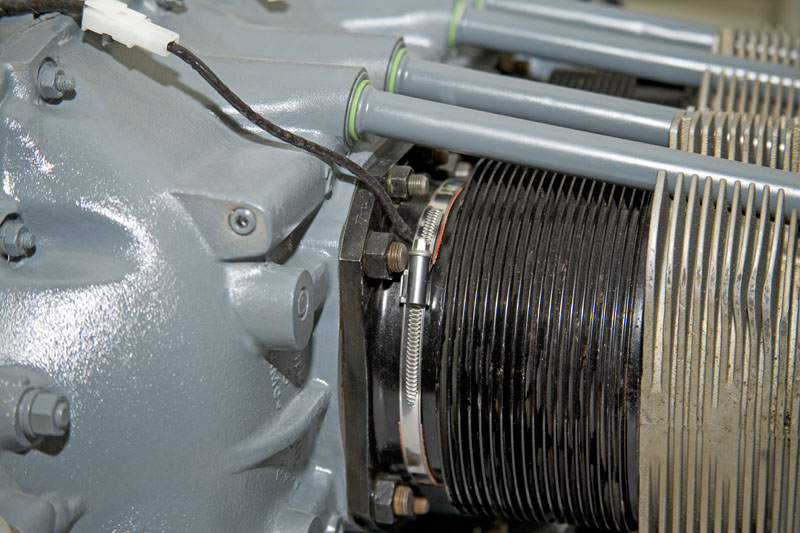
IV. Dimensions and weight
It is wise to choose a block heater that can sufficiently serve its purpose relating to the dimension of your engine.
A small block heater is enough if your engine is not that big.
Or, if you are not experiencing nasty temperatures that require significant engine heating.
Similarly, a huge engine in a frigid environment will necessitate a big block heater.
It will need a heater that has enough power to heat the engine efficiently.
Another thing, don’t burden your engine with a weight that’s not necessary.
Get a heater that is just the right size and weight for your ATV engine.
V. Heating capacity
As you consider the dimensions and weight, you also need to make sure that your device has enough heating capacity.
You need to ensure that the heater can run at lower temperatures or for less time.
Don’t settle for a heating capacity that’s inadequate.
If you’re not sure about what the right heating capacity for your engine is, ask your supplier for recommendations.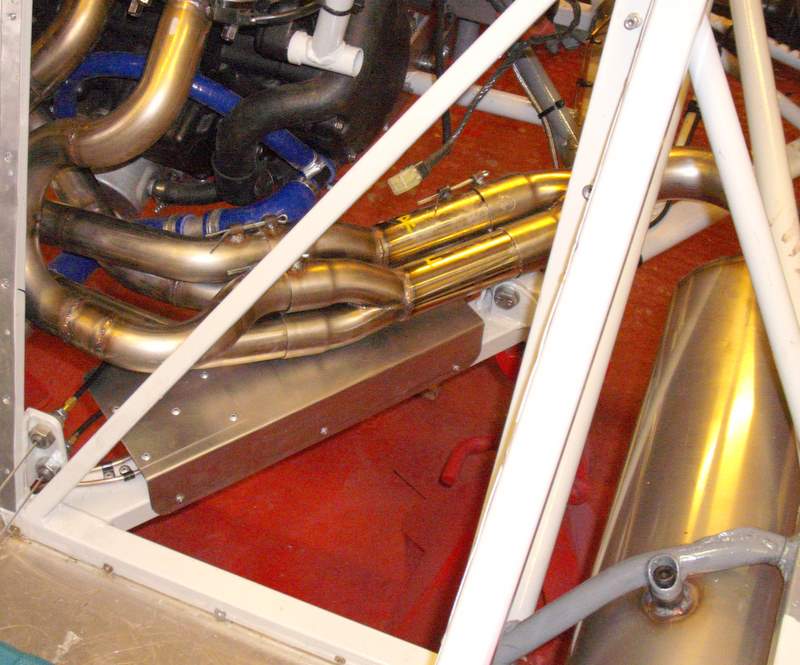
The recommendations will depend on the application, the engine, and the weather conditions.
VI. Warranty
You must check the warranty you’re getting with your heater.
It should be at least one year.
Overall, you need to determine what your need is and how much performance you’re looking to get out of the heater.
So make sure that you select a block heater that will accommodate what you need it for, and that will get the job done.
Step by Step ATV Block Heater Installation Process
As I’ve told you severally, block heaters are the easiest to install.
No matter the type.
A heater like the blanket one only requires plugging into a power source and switching it on.
A majority of the other heaters requires minimal work to install.
Here’s, a general step by step guide on how to go about it;
Step 1: First of all, gather all the equipment and tools that you’ll need. These include screwdrivers, screws, etc.
Step 2: Remove the coolant plug. Remember that the coolant could leak out so put something underneath the engine to capture any leaking coolant.
Step 3: Prepare the heater by applying sealant to the threads.
Step 4: From where you unplugged the coolant, slot in the block heater.
Step 5: Once the heater is put in place, fasten it securely.
Step 6: With the heater properly in place, make sure to wipe off any coolant residue.
Step 7: Start the heater, to test how properly it functions
Well that the installation process.
Simple right?
I know.
So now you can say goodbye to engine starting problems during cold weather.
VVKB ATV Block Heater –Your Trusted Partner for Engine, Parking and Fuel Heaters
Now that you know how much good a block heater can do for you and your ATV engine, are you getting one?
If yes, have you decided on what type of heater you’re importing?
No? Well, don’t worry.
VVKB is a qualified manufacturer of engine, parking and fuel heaters.
The company has heater experts that can help you determine the right block heater for your ATV.
Note that VVKB boasts of over 20 years of experience in producing the world-class engine, parking and fuel heaters.
Today, the company has become recognized as one of the finest leaders in engine heating system designs and sale.
The company is based in the United States but supplies products to many different parts of the world.
They can supply you with any type of heater or heater parts that you require.
Whether it is in Europe, USA, Germany or Sweden, VVKB will make sure that you get the best product wherever you are.
The good thing about all these is that VVKB has a website where users can find any information they need about products.
The website includes many different images as well as straightforward descriptions for your customer convenience.
So don’t waste any time and don’t wait for the cold to come for you to take action.
Give us a call today or visit our website to find the right heater for the cold months ahead.
ConclusionBlock heaters are not only a great way to get efficiency from your engine, especially during the cold months.
They’re also a great way to get extra use and value from the engine while saving money in repairs and replacements.
Remember that the type of heater you choose doesn’t matter as long as it is suitable for your engine.
What’s important is to stop having to wait longer for your engine to start or worrying that it may not even start due to the cold.
Good luck!
Name
Message
GENERAL REQUIREMENTS FOR THE INSTALLATION OF THE HEATER "Start-Classic", "Start-M", "Start":
The electric heater should be located in the engine compartment of the car as low as possible. The inlet pipe, if possible, should be below the drain hole (plug) in the cylinder block (a).
When laying sleeves, it is necessary to ensure constant slopes, preventing the formation of siphons (a, b).
The location of the heater is vertical, cover down. Permissible inclination from the vertical - 30° (c, d). A branch pipe located at an angle is always only an inlet, because it has an inlet valve.
1. In series with the interior heater.
2. In series with additional pipes of the cooling system (engine oil line heat exchanger, pipes of a small circle of the engine)
3. In engines with a lower thermostat location and the presence of a drain plug of the engine block, the following scheme is possible: coolant is taken from the drain hole of the engine block through a fitting from the kit, heated liquid is supplied to the upper branch pipe of the main radiator through a tee from the kit.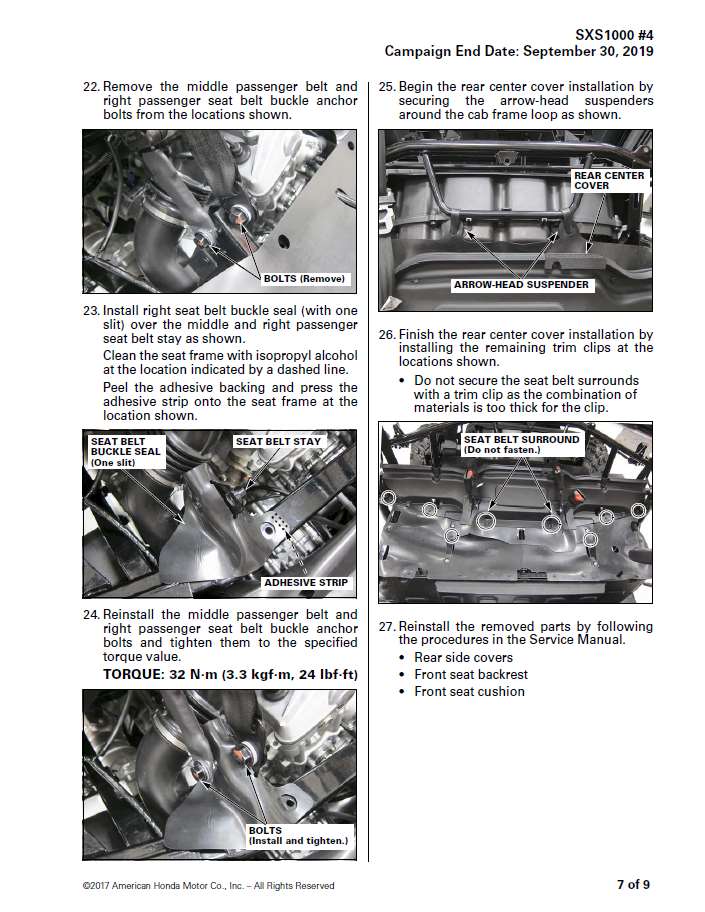
4. In engines with a top-mounted thermostat and a drain plug on the engine block, the following scheme is possible: coolant is taken from the drain hole of the engine block through a fitting from the kit, heated fluid is supplied to the injection pipe of the passenger compartment heater through a tee from the kit.
1. Clean the nest from dirt.
2. Apply sealant to the seat of the heater and press the heater into the socket with hammer blows through the mandrel, orienting the leads of the heating element with the cord down. When pressing in, do not allow distortion of the heater body.
3. Fasten the power cord with cable ties so that it does not touch the moving and very hot parts of the engine.
Attention! Taking into account the design features, all heaters of the Start-MP series should only be installed with the lid down with the inclination of the nozzle axis from 15 to 60 degrees to the horizontal in order to avoid air accumulation in the heater cavity and its failure due to overheating.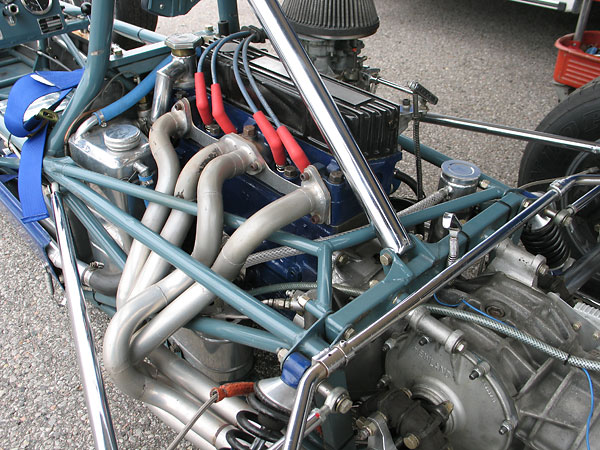 (See Fig. 3)
(See Fig. 3)
The electric heater is installed in the sections of the connecting hoses of the liquid engine cooling system. But the hose must lead up to the engine and must not have an engine thermostat installed in it.
The Start-MP heater must be installed in such a way that one of the pipes is higher than the other pipe
The electric heater is installed in the section of the lower radiator pipe (for vehicles with an upper thermostat)
The electric heater is installed in the section of the lower radiator pipe (for vehicles with an upper thermostat).
To ensure safe and continuous operation of the electric heater, it is necessary to monitor the health of the cooling system and maintain the required level of coolant in the system.
An auxiliary heater installed on the internal combustion engine reduces the warm-up time to a few minutes. Many car owners will be skeptical about such a prospect. However, in practice, installing a heater is much easier and more efficient than waiting 10-15 minutes in a cold car.
Many car owners will be skeptical about such a prospect. However, in practice, installing a heater is much easier and more efficient than waiting 10-15 minutes in a cold car.
Installing a heater for a 220V engine does not affect the engine itself, but the antifreeze, significantly increasing its temperature. This happens due to the tungsten spiral and a special block.
The engine preheater 220V, connected under the engine, does not work constantly, but only until the engine reaches its operating temperature. Then, with the help of a sensor, it turns off, and the motor continues to work in normal mode.
Owners of a diesel engine will appreciate the installation of an engine heater from 220V, since this type of engine is much more difficult to work at low temperatures. But it can be just as convenient to put heating on a gasoline car as it is for a diesel car.
Another significant advantage, for which it is worth connecting a heater, is the saving of gasoline and diesel fuel, as well as the rapid heating of the entire interior, which is very important for owners of leather seats.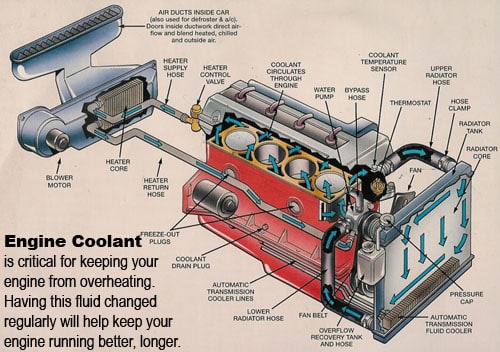
It is quite possible to make an engine preheater with your own hands if you have some skills and abilities. But first you need to figure out what they are in mass production.
There are two types of fuel heater:
Installing an electric heater is considered easier. It has a low cost, and its installation is very simple. It is based on a special block that heats the unit. Properly connected engine heating from 220 V works. It often comes with:
The installation diagram of the electric engine heater is very simple, so every car owner can use it. The main disadvantage can be considered only the amount of energy consumed, which is quite high for such a device.
Do-it-yourself self-contained engine preheater is much more difficult to install. Its system is more complicated, the cost is higher. They turn on with a button and do not require a power supply. The installed autonomous heating works from the fuel system or from a special petrol tank.
Its system is more complicated, the cost is higher. They turn on with a button and do not require a power supply. The installed autonomous heating works from the fuel system or from a special petrol tank.
The operation is based on the principle of air recirculation, which allows you to start the engine and quickly start moving, regardless of weather conditions and the power supply network. The device warms up the antifreeze, which then rises, enters the radiator, cools again and returns to the heater.
So the liquid circulates until it warms up the entire system, and it reaches the operating temperature. Autonomous heating, connected to the cooling system, can be installed anywhere that is free under the hood of the car. And it also quickly heats up the cabin.
The prospect of not waiting extra minutes on a frosty morning until the engine warms up seems very tempting for motorists. Many motorists at this stage will wonder if homemade heating exists. And how to install engine heating on your own?
And how to install engine heating on your own?
To understand how to make an engine preheater, first you have to accept that it will work from electricity. Therefore, the presence of an outlet in the parking lot will be one of the operating conditions.
So, a do-it-yourself 220V engine heater will consist of a heating element, fittings and several fittings. The heating element must be connected to a small circle of the cooling system and equipped with a pump so that when the engine is turned off, the liquid can circulate.
Installing an engine preheater has a fairly simple instruction, and for greater convenience, there are videos on the Internet that explain the steps step by step.
The first item required to assemble and install the heater is a standard inch pipe tee. It can be purchased at any plumbing store, you can also buy a heating element there, which will also be required to assemble your unit. The best option would be a heating element with an already built-in 1. 5 kW thermostat.
5 kW thermostat.
The heating element is installed in the end of the tee, and a ten-centimeter pipe is mounted on the other end. It is necessary for faster heating of the system. Plugs are installed on the free outlet and the end of the pipe for further connection of hoses.
Now we connect the received part to the coolant circulation system in the car. To do this, you need to find the place where the hose breaks from below, where the exit to the stove is, and build in a home-made device. A wire of a suitable section is connected to the contacts of the heating element, and at this the first stage can be considered successfully completed.
Next is the connection of the pump, with the help of which the liquid will circulate. The easiest way is to use the pump from Gazelle, as it is universal and has a fairly affordable cost. It is connected in front of the heater using an open relay to a car network or a regular outlet.
These are the main points on which the engine heating is installed.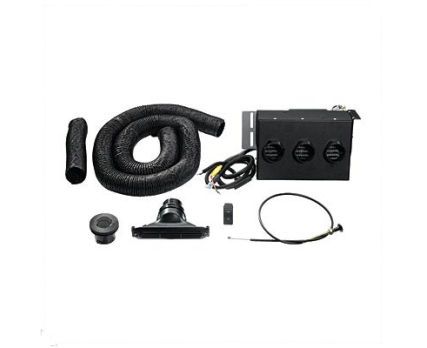
If you have absolutely no skills to perform such a job, the best option would be to purchase a ready-made device. How to connect the heating in this case will tell the instructions that are attached to the unit.
If you independently intervene in the internal combustion engine system and its cooling cycle, there is a risk of damaging some elements if you know firsthand about the internal structure of the car.
If the desire to figure it out and do all the work on your own is too great, then you should enlist help. Usually, an experienced motorist can understand the part of the system where the heating is installed and tell you the location of the necessary parts.
The easiest to use, but at the same time the most functional device is considered to be a device for PZD diesel engines. It costs modestly, but works effectively. Supports manual and automatic start, works with antifreeze and antifreeze, consumes less than a liter of fuel per hour in medium power mode.